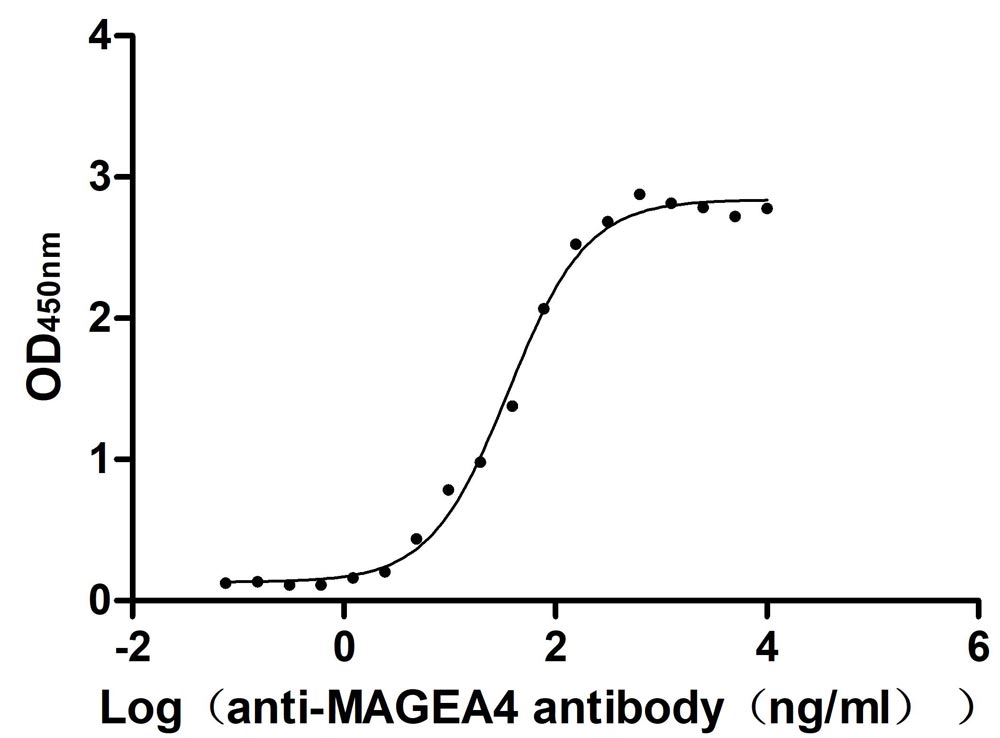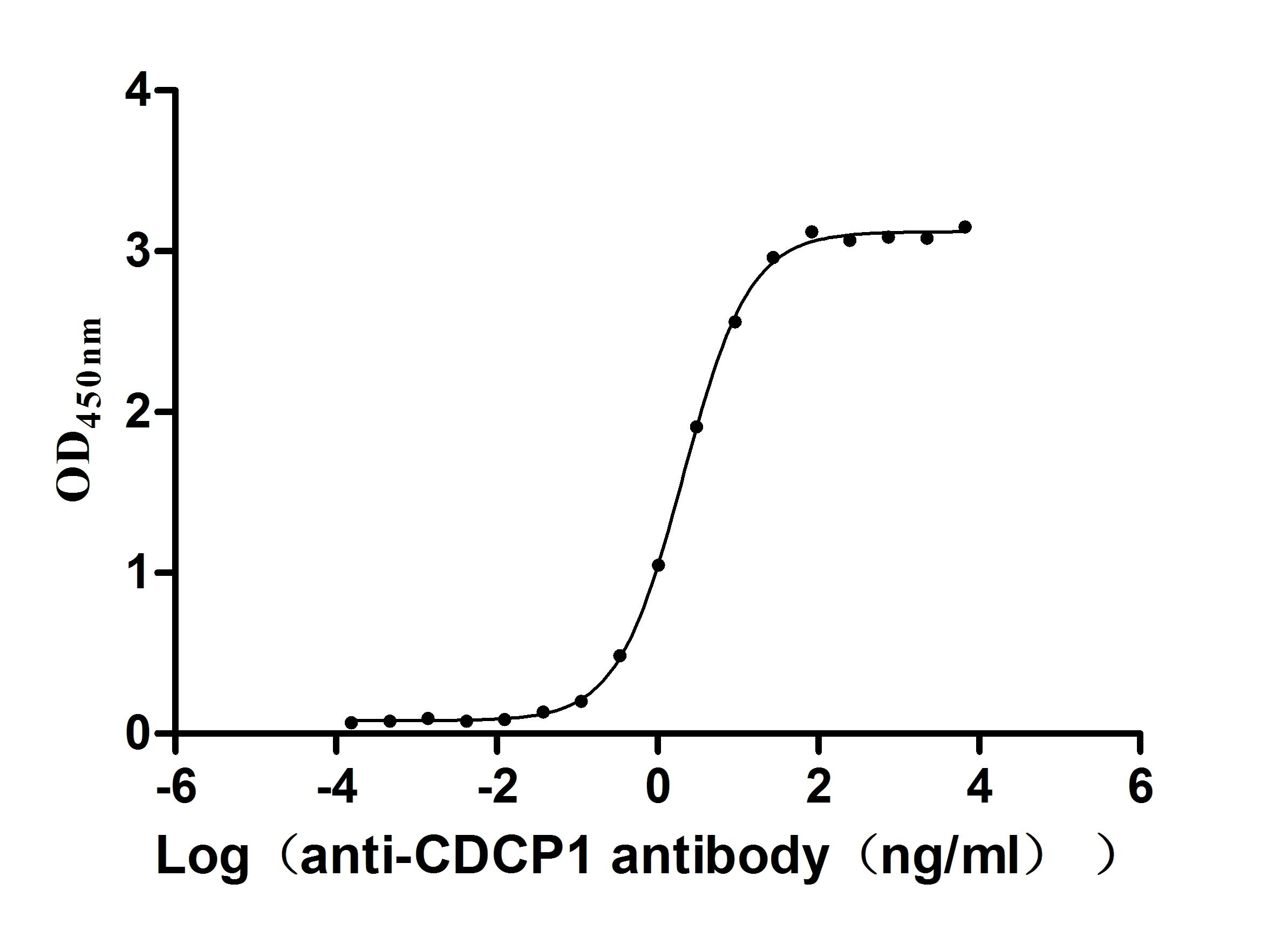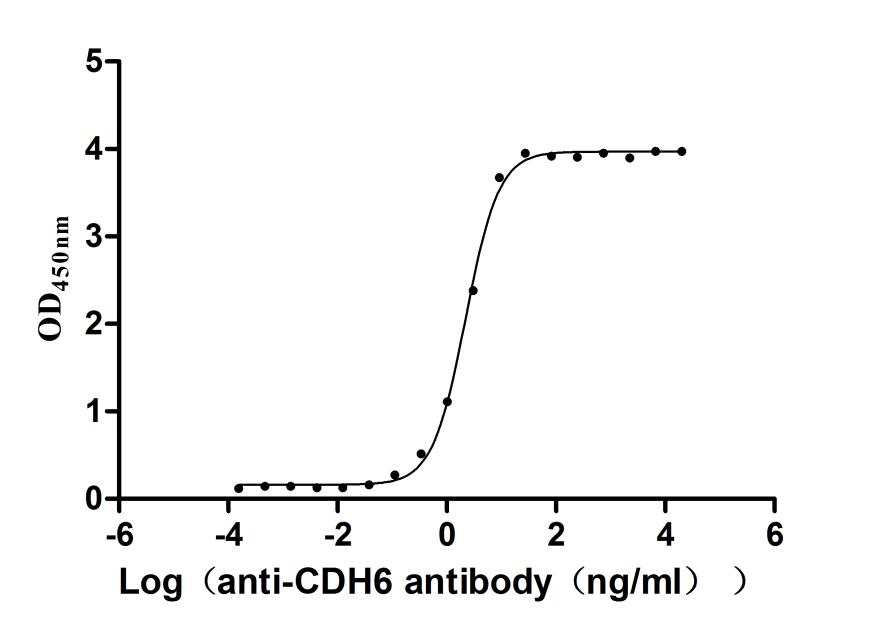Recombinant Human Neuronal regeneration-related protein (NREP)
-
货号:CSB-YP620971HU
-
规格:
-
来源:Yeast
-
其他:
-
货号:CSB-EP620971HU
-
规格:
-
来源:E.coli
-
其他:
-
货号:CSB-EP620971HU-B
-
规格:
-
来源:E.coli
-
共轭:Avi-tag Biotinylated
E. coli biotin ligase (BirA) is highly specific in covalently attaching biotin to the 15 amino acid AviTag peptide. This recombinant protein was biotinylated in vivo by AviTag-BirA technology, which method is BriA catalyzes amide linkage between the biotin and the specific lysine of the AviTag.
-
其他:
-
货号:CSB-BP620971HU
-
规格:
-
来源:Baculovirus
-
其他:
-
货号:CSB-MP620971HU
-
规格:
-
来源:Mammalian cell
-
其他:
产品详情
-
纯度:>85% (SDS-PAGE)
-
基因名:NREP
-
Uniprot No.:
-
别名:3.1 gene; C5orf13; Chromosome 5 open reading frame 13; D4S114; Neuronal protein 3.1; Neuronal regeneration related protein; Neuronal regeneration related protein homolog (rat); Neuronal regeneration related protein homolog; NP311_HUMAN; NREP; P311; PRO1873; Protein p311; PTZ17; SEZ17
-
种属:Homo sapiens (Human)
-
蛋白长度:full length protein
-
表达区域:1-68
-
氨基酸序列MVYYPELFVW VSQEPFPNKD MEGRLPKGRL PVPKEVNRKK NDETNAASLT PLGSSELRSP RISYLHFF
-
蛋白标签:Tag type will be determined during the manufacturing process.
The tag type will be determined during production process. If you have specified tag type, please tell us and we will develop the specified tag preferentially. -
产品提供形式:Lyophilized powder
Note: We will preferentially ship the format that we have in stock, however, if you have any special requirement for the format, please remark your requirement when placing the order, we will prepare according to your demand. -
复溶:We recommend that this vial be briefly centrifuged prior to opening to bring the contents to the bottom. Please reconstitute protein in deionized sterile water to a concentration of 0.1-1.0 mg/mL.We recommend to add 5-50% of glycerol (final concentration) and aliquot for long-term storage at -20℃/-80℃. Our default final concentration of glycerol is 50%. Customers could use it as reference.
-
储存条件:Store at -20°C/-80°C upon receipt, aliquoting is necessary for mutiple use. Avoid repeated freeze-thaw cycles.
-
保质期:The shelf life is related to many factors, storage state, buffer ingredients, storage temperature and the stability of the protein itself.
Generally, the shelf life of liquid form is 6 months at -20°C/-80°C. The shelf life of lyophilized form is 12 months at -20°C/-80°C. -
货期:Delivery time may differ from different purchasing way or location, please kindly consult your local distributors for specific delivery time.Note: All of our proteins are default shipped with normal blue ice packs, if you request to ship with dry ice, please communicate with us in advance and extra fees will be charged.
-
注意事项:Repeated freezing and thawing is not recommended. Store working aliquots at 4°C for up to one week.
-
Datasheet :Please contact us to get it.
相关产品
靶点详情
-
功能:May have roles in neural function. Ectopic expression augments motility of gliomas. Promotes also axonal regeneration. May also have functions in cellular differentiation. Induces differentiation of fibroblast into myofibroblast and myofibroblast ameboid migration. Increases retinoic-acid regulation of lipid-droplet biogenesis. Down-regulates the expression of TGFB1 and TGFB2 but not of TGFB3. May play a role in the regulation of alveolar generation.
-
基因功能参考文献:
- P311 is a novel TGFbeta1/Smad signaling-mediated regulator of transdifferentiation in epidermal stem cells during cutaneous wound healing. PMID: 27906099
- P311 could accelerate skin wound reepithelialization by promoting the migration of Epidermal Stem Cell through RhoA and Rac1 activation. PMID: 27927130
- These studies demonstrate that P311 is required for the production of normal cutaneous scars PMID: 27939132
- P311 plays a key role in renal fibrosis via TGFbeta1/Smad signaling, which could be a novel target for the management of renal fibrosis. PMID: 26616407
- P311 may promote the migration of ESCs both in micewith superficial partial-thickness burns and in an injured cell model in vitro, and it may play an important role in wound healing. PMID: 22967977
- Protein HYI may closely bind with protein P311 by an alpha helix in hypertrophic scar fibroblasts. PMID: 22490543
- P311 and ITGB4BP expression was elevated in non-small cell lung cancer, possibly indicative of a new signaling pathway. PMID: 21029697
- P311 may be involved in the pathogenesis of hypertrophic scar via induction of a myofibrobla PMID: 20404911
- role for P311 in inducing TGF-beta1-independent myofibroblast transformation PMID: 12417574
- These results suggest a role for levels of P311 in regulating glioma motility and invasion through the reorganization of actin cytoskeleton at the cell periphery. PMID: 16229809
- P311 expression is tightly regulated during the critical periods of alveolar formation, and that under pathologic conditions, its relative absence may contribute to failure of alveolar regeneration and lead to the development of human emphysema. PMID: 16484684
显示更多
收起更多
-
亚细胞定位:Cytoplasm.
-
组织特异性:Expressed in lung (at protein level).
-
数据库链接:
HGNC: 16834
OMIM: 607332
KEGG: hsa:9315
UniGene: Hs.36053
Most popular with customers
-
Recombinant Rabbit Tissue factor pathway inhibitor (TFPI) (Active)
Express system: Mammalian cell
Species: Oryctolagus cuniculus (Rabbit)
-
Recombinant Human Melanoma-associated antigen 4 (MAGEA4) (Active)
Express system: Mammalian cell
Species: Homo sapiens (Human)
-
Recombinant Human Serine/threonine-protein kinase receptor R3 (ACVRL1), partial (Active)
Express system: Baculovirus
Species: Homo sapiens (Human)
-
Recombinant Macaca fascicularis CUB domain containing protein 1 (CDCP1), partial (Active)
Express system: Mammalian cell
Species: Macaca fascicularis (Crab-eating macaque) (Cynomolgus monkey)
-
Recombinant Human Myosin regulatory light chain 12A (MYL12A) (Active)
Express system: E.coli
Species: Homo sapiens (Human)
-
Recombinant Macaca fascicularis Cadherin 6(CDH6),partial (Active)
Express system: Mammalian cell
Species: Macaca fascicularis (Crab-eating macaque) (Cynomolgus monkey)
-
Recombinant Human Tumor necrosis factor ligand superfamily member 15(TNFSF15) (Active)
Express system: Mammalian cell
Species: Homo sapiens (Human)








-AC1.jpg)










